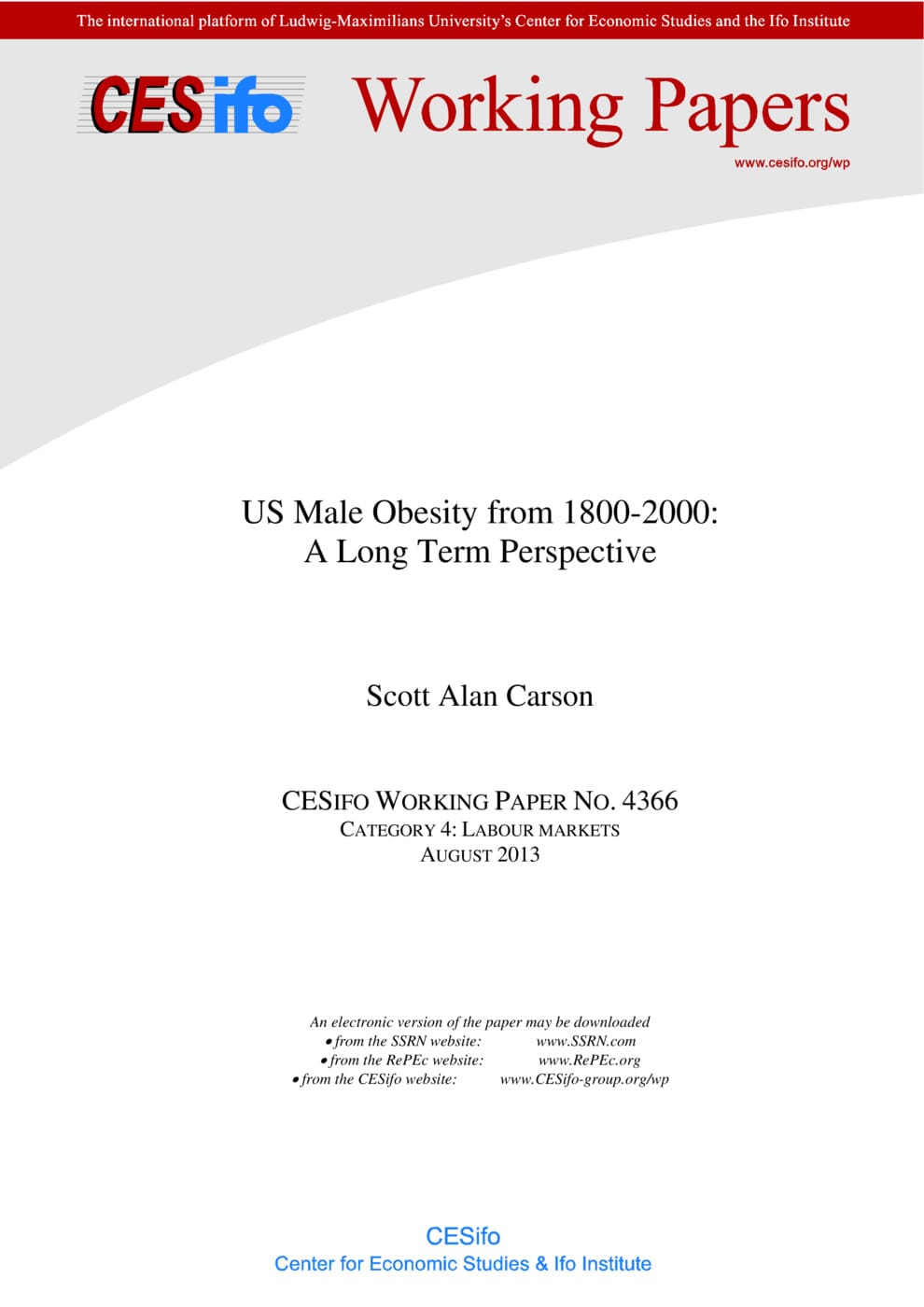US Male Obesity from 1800-2000: A Long Term Perspective
CESifo, Munich, 2013
CESifo Working Paper No. 4366

This study compares two US BMI data sets, one from the 1800s and the other from the early 2000s, to determine how black and white male obesity rates varied between 1800 and 2000. The proportion of individuals who were obese rather than overweight is responsible much of the increase in obesity. Because of their physical activity and close proximity to nutritious diets, farmers had greater BMI values than workers in other occupations; however, since the 19th century, physically less active white-collar and skilled workers have become more obese. Northeastern obesity rates are lower than from elsewhere within the US, while Midwestern BMIs increased and western BMIs decreased.
Labour Markets
Social Protection